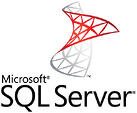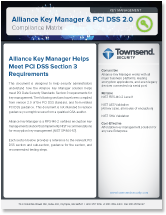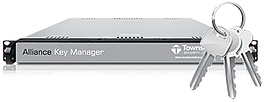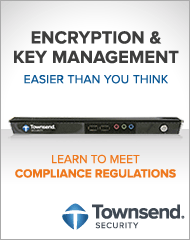 It is common knowledge in the IT world that the threat of a data breach is now greater than any other time in the history of technology. Since late 2007, the amount of personal information that has been exposed through data breaches is alarming. According to the Identity Theft Resource Center, over 30 million Americans have been victims of data breaches. This is not withstanding the fact that these statistics only count breaches that have been reported.
It is common knowledge in the IT world that the threat of a data breach is now greater than any other time in the history of technology. Since late 2007, the amount of personal information that has been exposed through data breaches is alarming. According to the Identity Theft Resource Center, over 30 million Americans have been victims of data breaches. This is not withstanding the fact that these statistics only count breaches that have been reported.
However, this problem is not unique to the United States. No business organization is immune to risk no matter its size and regardless of the industry or location. Governments all over the world have instituted laws and regulations aimed at protecting the privacy of its citizens. Businesses have now realized the importance of keeping their sensitive data (PCI DSS, HIPAA, SOX, FFIEC) safe and secure. They have come to realize that protecting their sensitive and critical data protects not only their reputation and profitability, but also aids business objectives. Storing and moving unencrypted sensitive data means taking risks that may result in brand damage, loss of customers, heavy litigation expenses, and possibly millions of dollars in fines. These are some of the dilemmas that an organization would not want to find itself needing to mitigate.
Encryption and key management are a critical part of the solution.
Data encryption is now the primary control helping organizations meet security standards and comply with regulatory guidelines such as the PCI DSS, HIPAA, SOX, and GLBA/FFIEC.
What factors and threats drive companies to use encryption key management to mitigate their risk of a data breach?
- An increase in the amount of sensitive data being stored
- Risk of data loss by employees mishandling data
- Increased sharing of authorized data with external users
- Emerging markets for stolen data
- Stringent regulatory requirements
Current NIST standards have rendered old security technologies ineffective in dealing with IT security risks. Effective encryption key management protects your customers data from potential threat. Encryption will help:
- Protect your data and sensitive information regardless of the location
- Meet compliance and regulatory requirements and therefore pass your audits
- Protect your business, avoid brand damage and increase profitability
If your business wishes to protect its information from all the above risks, data encryption is necessary to achieve your data security goals and objectives.
Download our white paper "AES Encryption Strategies - A White Paper for the IT Executive" to learn more about key issues in data security, how to choose the right data security partner, and how to develope a strategy that insures early successes.




 It is important for businesses of all sizes running on SQL servers to encrypt any sensitive data that they store or move. Although business size can determine specific compliance requirements that need to be met, all companies handling sensitive data are vulnerable to the major risk of failing a security audit if their data isn’t properly secured on their SQL servers.
It is important for businesses of all sizes running on SQL servers to encrypt any sensitive data that they store or move. Although business size can determine specific compliance requirements that need to be met, all companies handling sensitive data are vulnerable to the major risk of failing a security audit if their data isn’t properly secured on their SQL servers.
 Any way you look at it, 2011 was a very bad year for database security. From the high-profile (and highly embarrassing) series of attacks on Sony's PlayStation Network, to the less-publicized Epsilon breach which was described by the
Any way you look at it, 2011 was a very bad year for database security. From the high-profile (and highly embarrassing) series of attacks on Sony's PlayStation Network, to the less-publicized Epsilon breach which was described by the 

 As a company that provides NIST-certified encryption and FIPS 140-2 encryption key management, we need to secure data on a number of different platforms. Lately we have been coming into several cases where a customer needs encryption and key management on both Microsoft SQL Server and Oracle databases. Below is an email exchange with a customer who came to us “looking for a product to store, generate and manage keys that we use to encrypt/decrypt credit card information inside both SQL Server and Oracle Databases on Windows and UNIX.” We hope this discussion helps with your encryption project.
As a company that provides NIST-certified encryption and FIPS 140-2 encryption key management, we need to secure data on a number of different platforms. Lately we have been coming into several cases where a customer needs encryption and key management on both Microsoft SQL Server and Oracle databases. Below is an email exchange with a customer who came to us “looking for a product to store, generate and manage keys that we use to encrypt/decrypt credit card information inside both SQL Server and Oracle Databases on Windows and UNIX.” We hope this discussion helps with your encryption project. Key Generation:
Key Generation:



 AES Encryption
AES Encryption 
 At Townsend, we have a lot of conversations with customers and prospects about data privacy, compliance requirements and best practices for IT security in general. We have written numerous articles on these topics and posted them on our blog. As the end of 2011 quickly approaches, we thought it would be worthwhile to list out our most read articles of the year.
At Townsend, we have a lot of conversations with customers and prospects about data privacy, compliance requirements and best practices for IT security in general. We have written numerous articles on these topics and posted them on our blog. As the end of 2011 quickly approaches, we thought it would be worthwhile to list out our most read articles of the year. 